#image expert india
Text
How to save money on your jewelry retouching expenses
As you’re probably aware, expenses come from all over the place; from outside resources, to outside opportunities, and everything in between. However, there are some smart ways to save money on jewelry retouching expenses that may surprise you! In this article, I’ll talk about how to save money on your jewelry retouching expenses as well as how to save money as an overall company expense. Let’s get started!
Choose high quality photos
The first thing most businesses look at when evaluating saving money is their expenses. Expenses mainly come from outside and inside resources. We can’t predict what’s ahead, but what are some smart ways to save money? One of the easiest ways is by using high-quality photos. The best way to edit a photo is with Photoshop which is a costly program.

Use Free Stock Photos
Running a small business is never easy and often times we don’t have the right tools or skills to complete certain tasks. But it doesn’t have to be that way! There are plenty of resources out there if you know where to look. One such resource is free stock photos. There are plenty of sites with high quality, royalty-free images that you can use in your blog posts, social media posts, and other marketing materials.
Shop Around
You should always shop around before committing to any one retoucher. Prices can vary wildly, so it’s important to know what you want and how much it will cost. You can also ask other jewelers for referrals or recommendations.
Retouch as you go
Retouching as you go is a great way to prevent errors that can cost you time and money. You will also be able to share photos with potential customers without worrying about the quality. When it comes down to it, there are two ways you can be proactive when it comes to saving money on this area of business: pre-retouch and in-retouch. Pre-retouches are done before photos are taken, and in-retouches are done during or after the photo has been taken.
Be careful with customers recommendations
We work hard to make sure that our customers are satisfied with their purchase, so we’re careful about what kind of recommendations we give them. Instead of suggesting a product they might not need, we always ask if they have any other questions or concerns.
Keep track of promotional activities
The first thing most businesses look at when evaluating saving money is their expenses. Expenses mainly come from outside and inside resources. We can’t predict what’s ahead, but what are some smart ways to save money
Jewelry retouching tutorial for online shop and ecommerce website, The first thing most businesses look at when evaluating saving money is their expenses. Expenses mainly come from outside and inside resources.
8 notes
·
View notes
Text
How to Make Your E-Commerce Jewelry Stand Out with High Quality Retouching
E-commerce businesses are competitive. In order to stay competitive, you have to offer top quality products and services that appeal to your customers and potential customers. High-quality images of your jewelry can make all the difference in getting and keeping your customer’s business. But how do you get those high quality images? By hiring a jewelry retouching company of course! Here’s how you can make sure that your jewelry retouching looks its best by following these five tips!
The Importance of High Quality Retouching
Retouching is important because it can be the difference between an e-commerce business that sells products that are perceived as low quality and one that sells products that are perceived as high quality. The more you invest in retouching, the better your jewelry will look, which will lead to higher sales. Customers who shop for jewelry online want to know they're getting a good product for their money. With excellent retouching, your business stands out from the competition and builds brand loyalty among customers.

The Benefits of High Quality Retouching
Retouching photos of your jewelry can be a great way to set your products apart from the competition. One benefit is that you don't need expensive, high quality photography equipment and software in order to offer this service. Another benefit is that it can allow you to make your products appear as if they are brand new, which may entice customers who might not have considered buying them before. If you're looking for ways to attract more customers, retouching could be an excellent option for you!
How to Achieve High Quality Retouching
The first step to achieving high quality retouching is finding the right photographer. This can be a daunting task, as there are so many photographers out there and it can be hard to tell what separates one from another. One easy way you can tell if someone has high quality photography is by looking at their portfolio. If they have many different pieces of jewelry that are all of a high level of quality, then they are likely a good photographer for your needs.
The Different Types of Retouching Techniques
With a variety of retouching techniques, there is no shortage of ways to make your e-commerce jewelry stand out and be the best. Here are five types of retouching techniques you can use:
1) Color Correction -
The purpose of color correction is to enhance the colors in an image by adjusting the colors for a more realistic look. This technique is most commonly used for product photography.
The Best Tools for Retouching
There are three main tools I use for retouching jewelry: Photoshop, the Clone Stamp Tool, and the Spot Healing Brush Tool. These tools can be found in Adobe Photoshop and allow me to remove blemishes and make minor adjustments like changing the color or size of a diamond.
youtube
4 notes
·
View notes
Text
How to Make Your E-Commerce Jewelry Stand Out with High Quality Retouching
E-commerce businesses are competitive. In order to stay competitive, you have to offer top quality products and services that appeal to your customers and potential customers. High-quality images of your jewelry can make all the difference in getting and keeping your customer’s business. But how do you get those high quality images? By hiring a retouching company of course! Here’s how you can make sure that your jewelry retouching looks its best by following these five tips!

The Importance of High Quality Retouching
Retouching is important because it can be the difference between an e-commerce business that sells products that are perceived as low quality and one that sells products that are perceived as high quality. The more you invest in retouching, the better your jewelry will look, which will lead to higher sales. Customers who shop for jewelry online want to know they're getting a good product for their money. With excellent retouching, your business stands out from the competition and builds brand loyalty among customers.
The Benefits of High Quality Retouching
Retouching photos of your jewelry can be a great way to set your products apart from the competition. One benefit is that you don't need expensive, high quality photography equipment and software in order to offer this service. Another benefit is that it can allow you to make your products appear as if they are brand new, which may entice customers who might not have considered buying them before. If you're looking for ways to attract more customers, retouching could be an excellent option for you!
How to Achieve High Quality Retouching
The first step to achieving high quality retouching is finding the right photographer. This can be a daunting task, as there are so many photographers out there and it can be hard to tell what separates one from another. One easy way you can tell if someone has high quality photography is by looking at their portfolio. If they have many different pieces of jewelry that are all of a high level of quality, then they are likely a good photographer for your needs.
The Different Types of Retouching Techniques
With a variety of retouching techniques, there is no shortage of ways to make your e-commerce jewelry stand out and be the best. Here are five types of retouching techniques you can use:
1) Color Correction -
The purpose of color correction is to enhance the colors in an image by adjusting the colors for a more realistic look. This technique is most commonly used for product photography.
The Best Tools for Retouching
There are three main tools I use for retouching jewelry: Photoshop, the Clone Stamp Tool, and the Spot Healing Brush Tool. These tools can be found in Adobe Photoshop and allow me to remove blemishes and make minor adjustments like changing the color or size of a diamond.
2 notes
·
View notes
Text
How to Make Your Jewelry Photos Pop with Image Expert India
Are you a photographer, magazine editor, advertising agency or online store looking to make your jewelry photos stand out? If so, you'll want to take a closer look at Image Expert India. Image Expert India is a professional jewelry retouching service provider that specializes in transforming dull, lifeless jewelry photos into stunning, eye-catching images. With Image Expert India, you can make your jewelry photos pop with their advanced retouching techniques. Through their expertise, you can bring out the best features of your jewelry photos and give them the life they deserve.

Why You Need a Professional Jewelry Retoucher
Having professional jewelry photos can make a world of difference for your business. Whether you are selling jewelry online or showcasing your designs in magazines and print ads, a high-quality image of your jewelry is essential for making a lasting impression. This is why hiring a professional jewelry retoucher is so important.
Image Expert India is a professional jewelry retouching service provider that specializes in making your jewelry photos look their absolute best. Our experienced team of experts has been providing retouching services to photographers, magazines, advertising agencies, and online stores for years. We understand the importance of having a perfect product image, which is why we strive to provide the highest quality of service possible.
At Image Expert India, we offer a variety of retouching services to suit your needs. From basic color correction and enhancement to complex effects such as reshaping and repositioning, our team of professionals can bring out the best in your jewelry photos. We also provide services such as background removal, creative manipulation, and custom textures. We understand that no two pieces of jewelry are alike, which is why we work closely with each of our clients to ensure that their product images look just right.
No matter what type of jewelry you are photographing, Image Expert India has the tools and expertise necessary to make your photos look amazing. With our help, you can make sure your jewelry images have the perfect amount of shine and sparkle that will draw customers in. Don't take chances with subpar images; contact Image Expert India today and give your jewelry the professional touch it deserves.
What Services Does Image Expert India Offer?
Image Expert India is a professional jewelry retouching service provider offering an array of services to photographers, magazines, advertising agencies, and online stores. Their experienced team of digital artists provide top-notch retouching services that can help make your jewelry photos stand out.
The services provided by Image Expert India include jewelry retouching, color correction, detail enhancement, and background removal. Each service is tailored to the specific needs of the client, ensuring that their images are given the best possible treatment. With their meticulous attention to detail, they can transform any ordinary photo into a stunning masterpiece.
When it comes to jewelry retouching, Image Expert India offers a wide range of options. They can remove scratches and imperfections, enhance the metal's brightness, and even add depth and texture to bring out the full beauty of the jewelry piece. Additionally, they can help make sure that each stone is accurately portrayed with precise color correction.
Image Expert India also offers background removal services, so you can show off your jewelry pieces in the best light possible. Whether you want to isolate the jewelry from its surroundings or create a white background for your image, their team of experts can deliver results that will truly make your jewelry photos pop.
With Image Expert India's professional jewelry retouching services, you can take your photos to the next level. Whether you need help with color correction or background removal, they have the skills and experience necessary to give your photos the perfect look. So if you want to make your jewelry photos stand out, trust the experts at Image Expert India.
Why Choose Image Expert India?
If you’re looking to make your jewelry photography pop, Image Expert India is the perfect choice for you. Our team of experienced professional retouchers can help you take your photos to the next level with our extensive array of services.
At Image Expert India, we specialize in jewelry retouching and color correction, as well as enhancing detail and adding texture. We understand that getting the perfect shot can be challenging and our experienced professionals are here to help you get the best out of your photos. We guarantee that our work will result in vibrant, crystal clear images that will bring out the best in your jewelry pieces. jewelry #photo #retouching #services #service #image #photo #editor #online
Our retouching services include:
Color Correction: Bring life to dull colors, adjust and correct shadows and highlights, and enhance color tones to make your jewelry photos stand out.
Detail Enhancement: Increase details and clarity, sharpen lines and edges, and remove unwanted noise or artifacts to create a professional look.
Texture Enhancement: Add depth and realism to your photos with natural textures and subtle shadows to make them look more alive.
Our goal is to provide you with superior quality retouching services that will ensure that your images look amazing no matter the platform or device. We are dedicated to helping you create stunning jewelry photography that will leave a lasting impression on your customers. Contact us today to learn more about how our team of experts can help you take your photos to the next level.
How to Get Started
Are you a photographer, advertiser, magazine or online store looking to make your jewelry photos pop? Image Expert India offers professional jewelry retouching services to help you achieve amazing results with your photographs. Here’s how to get started:
Choose Your Retouching Service – Whether you need basic color correction and cropping or more advanced editing such as shadow and light effects, Image Expert India has the perfect retouching service for you. Browse their website and select the package that best suits your needs.
Place Your Order – Once you have selected your package, it’s time to place your order. Simply fill in the form on the website and upload your images. Your payment will be securely processed through PayPal.
Receive Your Retouched Photos – Image Expert India will work quickly to provide you with high-quality edited images within the agreed timeline. You will receive your photos via an online link where you can view, download, and share them with others.
At Image Expert India, they understand that quality matters when it comes to photography, so they strive to exceed customer expectations. You can trust them to deliver the best results with their professional jewelry retouching services. So what are you waiting for? Get started today and make your jewelry photos pop!
Resources content:
#jewelry photo retouching services#jewelry retouching#jewellery photo editor online#jewelry photo editing#image expert india
0 notes
Text
The Wonders of Clipping Path Services: Why You Need Them for Your Images
When it comes to marketing your products or services, images are essential to attracting the right audience and encouraging them to buy your product. However, if there’s something distracting in the background of your image, you could lose out on sales opportunities. Clipping path services can fix this problem by cutting out the parts of an image you don’t want people to see or focus on when they look at your images. If you aren’t already using clipping path services, here’s why you should start today!
What are clipping path services?
Clipping path services are a type of design service that is used to cut out objects from images. They are typically used in photo editing, but can also be used in web design and graphic design. The process usually involves drawing a path around the object in question, then using the path to cut it out from its background.

How can they improve your images?
Clipping path services can be used to create more appealing and powerful imagery that will make you stand out from the competition. We use clipping path service and various image masking tricks to cut out the background of any product image you give us for editing.
What benefits do they offer?
Clipping path services are an important tool in the digital marketer's arsenal. They help make images more presentable and can even be used to alter the perception of a product. These days, you need clipping paths just to compete with other websites. Here are five reasons why you should use them for your images.
“Image expert india clipping path service providers Image expert india best clipping path service Image expert india multi clipping path service Image expert india clipping path service free Image expert india what are clipping path services Image expert india what is multi clipping path Image expert india clipping path company Image expert india what is the best clipping service Image expert india best clipping path service Image expert india what is amazon clipping Image expert india media clipping service Image expert india press clipping service meaning Image expert india free news clipping service Image expert india clipping service coupons Image expert india clipping path outsource Image expert india online clipping path Image expert india clipping path product“
How much do they cost?
Clipping path service can be expensive, but they are worth the investment if you want to get your product images looking as good as possible. Our final fee will depend on a few factors, including the quality and complexity of the image itself, and how much work is involved in processing it. But don't worry - we'll always provide you with an estimate before starting any project.
How can you find a reputable provider?
A good place to start is by looking up reviews on the company. This will give you an idea about how satisfied their clients are with the service they provide. Another good way to find a reputable provider is to ask other designers or photographers in your area which company they use or have heard good things about. It's also worth asking friends and family who might have some knowledge about clipping path services, as this can be a great way to find out information that you might not be able to find online.
youtube
1 note
·
View note
Text
https://www.fiverr.com/towhidul_/do-photo-retouching-services
#fiverr#towhidul_#photoeditor#photo edit#photoshop#photographer#image edit#image expert india#retouching#shadow high#backgroundchange#backgroundremove#clippingpathservice#editing#photoediting#photoedit#shadow#masking#colorcorrection#vectortracing#ecommerce#photoeditingservice#retouch#upwork#path#ecommerceimageediting#cutout#cutoutimage#beautyretouching#beautyretouch
0 notes
Text
youtube
#How Portrait Photography Can Transform Your Confidence With Elizabeth Snyder Discover how to radiate confidence both in front of the camera#award-winning women's portraiture artist. Learn powerful techniques to overcome fear#find your purpose#and embrace your authentic self. This episode offers transformative insights on self-image#personal branding#and the art of portraying your best self – essential for every woman looking to reclaim her worth and power.
-----------------------------#enhance your skills#or even appear as a special guest on my show! Schedule on my calendar at Calendly: https://calendly.com/kajofficial. Ready to take it furth#speaking engagements#or personalized coaching#contact [email protected]
*SUPPORT KAJ MASTERCLASS*
🌟 Elevate your content creation game with Headline Studio! Unleash the power#confidence expert#and workshop leader passionately committed to helping women feel their best.
She specializes in women's portraiture#branding#and headshots because it is her mission to help women feel their worth in any situation.
Elizabeth has decades of photography experience an#the Castellani Art Museum's 20/20 Vision: Women Artists in Western New York exhibition#the WeddingWire Couples Choice award#and the top 10 photographers in Buffalo through Expertise.
Connect:
https://www.elizabethsnyderphotography.com/
https://www.facebook.com/es#Khudania Ajay (KAJ)#is a seasoned content entrepreneur#podcast host#and independent journalist with over two decades of media industry experience. Having worked with prestigious organizations like CNBC (Indi#Reuters#and Press Trust of India#Ajay is dedicated to helping you succeed through his LIVE Masterclasses. With a wealth of knowledge accumulated from hosting over 1200 podc#Ajay brings unparalleled expertise and insights to every episode.
Connect with Ajay:
LinkedIn: https://www.linkedin.com/in/ajaykhudania#Youtube
0 notes
Text
Analyzing social media data has become increasingly crucial for gaining insights into user behavior, market trends, and overall public sentiment. Advanced techniques in social media data analysis involve utilizing sophisticated tools and methodologies to extract meaningful information.
#Social Media Analytics#Online Reputation Management India#India ORM Services#ORM Solutions India#Best ORM Company India#Online Brand Protection India#Reputation Repair India#India Reputation Monitoring#India Reputation Cleanup#Personal Brand Management India#Online Image Repair India#Corporate Reputation India#India ORM Strategies#ORM for Small Businesses India#India Reputation Crisis#Affordable ORM Services India#ORM Expert India#India Online Image Management#Local Business Reputation India#ORM for Startups India#India Reputation Building
0 notes
Text

🚀 Superfast Cut-Out Images and Background Removal 🌟
Experience the lightning-fast solution to cut-out images and remove backgrounds for your photos! We understand that time is of the essence, and that's why we offer a superfast service that doesn't compromise on quality.
Why Choose Us?
⚡ Rapid Turnaround: We take pride in delivering results at warp speed, ensuring that your project is completed in record time.
✔️ Precision and Quality: Speed doesn't mean sacrificing quality. Our expert team maintains the highest standards to make your images stand out.
💬 Clear Communication: We streamline the process, making it quick and easy for you to submit your images and get the results you need.
💯 Client Satisfaction: Your happiness is our priority, and we guarantee your satisfaction with every project.
💰 Competitive Pricing: Enjoy swift, professional services at rates that won't break the bank.
Our Services:
✂️ Background Removal: We'll cleanly cut out backgrounds, giving you the freedom to add your desired setting or leave it transparent.
🌈 Image Enhancement: We ensure your subject looks its best, enhancing colors, sharpness, and overall quality.
🖼️ Customized Solutions: No two projects are the same. We cater to your specific needs, offering tailored results.
Get Started: Ready to experience the superfast difference? Contact us today, share your project details, and watch your images transformed in no time. We're here to meet your deadlines and exceed your expectations.
🌠 Speed Meets Quality: Don't wait when you need to make your images pop. Contact us now and let's create a visual impact like never before!
Customize this description to reflect your specific services and unique selling points. The key is to highlight the speed and quality of your cut-out image and background removal services while assuring potential clients of your commitment to delivering top-notch results.
Get Started
#clipping path#clipping path in illustrator#css clipping path#how to make a clipping path in illustrator#clipping path service#make clipping path illustrator#svg clipping path#clipping path in photoshop#clipping path services provider#create clipping path indesign#indesign clipping path#clipping path service providers#clipping path india#how to create a clipping path in illustrator#clipping path adobe illustrator#what is clipping path#clipping path company#image clipping path service#best clipping path service#clipping path expert#clipping path companies#asian clipping path#how to make a clipping path in photoshop#photo clipping path#create clipping path photoshop#how to create clipping path in photoshop#offshore clipping path#clipping path service provider company#clipping path picture#how to create a clipping path in photoshop
0 notes
Text
Indian Prime Minister Narendra Modi is, by some measures, the most popular leader in the world. Prior to the 2024 election, his Bharatiya Janata Party (BJP) held an outright majority in the Lok Sabha (India’s Parliament) — one that was widely projected to grow after the vote count. The party regularly boasted that it would win 400 Lok Sabha seats, easily enough to amend India’s constitution along the party's preferred Hindu nationalist lines.
But when the results were announced on Tuesday, the BJP held just 240 seats. They not only underperformed expectations, they actually lost their parliamentary majority. While Modi will remain prime minister, he will do so at the helm of a coalition government — meaning that he will depend on other parties to stay in office, making it harder to continue his ongoing assault on Indian democracy.
So what happened? Why did Indian voters deal a devastating blow to a prime minister who, by all measures, they mostly seem to like?
India is a massive country — the most populous in the world — and one of the most diverse, making its internal politics exceedingly complicated. A definitive assessment of the election would require granular data on voter breakdown across caste, class, linguistic, religious, age, and gender divides. At present, those numbers don’t exist in sufficient detail.
But after looking at the information that is available and speaking with several leading experts on Indian politics, there are at least three conclusions that I’m comfortable drawing.
First, voters punished Modi for putting his Hindu nationalist agenda ahead of fixing India’s unequal economy. Second, Indian voters had some real concerns about the decline of liberal democracy under BJP rule. Third, the opposition parties waged a smart campaign that took advantage of Modi’s vulnerabilities on the economy and democracy.
Understanding these factors isn’t just important for Indians. The country’s election has some universal lessons for how to beat a would-be authoritarian — ones that Americans especially might want to heed heading into its election in November.
-via Vox, June 7, 2024. Article continues below.
A new (and unequal) economy
Modi’s biggest and most surprising losses came in India’s two most populous states: Uttar Pradesh in the north and Maharashtra in the west. Both states had previously been BJP strongholds — places where the party’s core tactic of pitting the Hindu majority against the Muslim minority had seemingly cemented Hindu support for Modi and his allies.
One prominent Indian analyst, Yogendra Yadav, saw the cracks in advance. Swimming against the tide of Indian media, he correctly predicted that the BJP would fall short of a governing majority.
Traveling through the country, but especially rural Uttar Pradesh, he prophesied “the return of normal politics”: that Indian voters were no longer held spellbound by Modi’s charismatic nationalist appeals and were instead starting to worry about the way politics was affecting their lives.
Yadav’s conclusions derived in no small part from hearing voters’ concerns about the economy. The issue wasn’t GDP growth — India’s is the fastest-growing economy in the world — but rather the distribution of growth’s fruits. While some of Modi’s top allies struck it rich, many ordinary Indians suffered. Nearly half of all Indians between 20 and 24 are unemployed; Indian farmers have repeatedly protested Modi policies that they felt hurt their livelihoods.
“Everyone was talking about price rise, unemployment, the state of public services, the plight of farmers, [and] the struggles of labor,” Yadav wrote...
“We know for sure that Modi’s strongman image and brassy self-confidence were not as popular with voters as the BJP assumed,” says Sadanand Dhume, a senior fellow at the American Enterprise Institute who studies India.
The lesson here isn’t that the pocketbook concerns trump identity-based appeals everywhere; recent evidence in wealthier democracies suggests the opposite is true. Rather, it’s that even entrenched reputations of populist leaders are not unshakeable. When they make errors, even some time ago, it’s possible to get voters to remember these mistakes and prioritize them over whatever culture war the populist is peddling at the moment.
Liberalism strikes back
The Indian constitution is a liberal document: It guarantees equality of all citizens and enshrines measures designed to enshrine said equality into law. The signature goal of Modi’s time in power has been to rip this liberal edifice down and replace it with a Hindu nationalist model that pushes non-Hindus to the social margins. In pursuit of this agenda, the BJP has concentrated power in Modi’s hands and undermined key pillars of Indian democracy (like a free press and independent judiciary).
Prior to the election, there was a sense that Indian voters either didn’t much care about the assault on liberal democracy or mostly agreed with it. But the BJP’s surprising underperformance suggests otherwise.
The Hindu, a leading Indian newspaper, published an essential post-election data analysis breaking down what we know about the results. One of the more striking findings is that the opposition parties surged in parliamentary seats reserved for members of “scheduled castes” — the legal term for Dalits, the lowest caste grouping in the Hindu hierarchy.
Caste has long been an essential cleavage in Indian politics, with Dalits typically favoring the left-wing Congress party over the BJP (long seen as an upper-caste party). Under Modi, the BJP had seemingly tamped down on the salience of class by elevating all Hindus — including Dalits — over Muslims. Yet now it’s looking like Dalits were flocking back to Congress and its allies. Why?
According to experts, Dalit voters feared the consequences of a BJP landslide. If Modi’s party achieved its 400-seat target, they’d have more than enough votes to amend India’s constitution. Since the constitution contains several protections designed to promote Dalit equality — including a first-in-the-world affirmative action system — that seemed like a serious threat to the community. It seems, at least based on preliminary data, that they voted accordingly.
The Dalit vote is but one example of the ways in which Modi’s brazen willingness to assail Indian institutions likely alienated voters.
Uttar Pradesh (UP), India’s largest and most electorally important state, was the site of a major BJP anti-Muslim campaign. It unofficially kicked off its campaign in the UP city of Ayodhya earlier this year, during a ceremony celebrating one of Modi’s crowning achievements: the construction of a Hindu temple on the site of a former mosque that had been torn down by Hindu nationalists in 1992.
Yet not only did the BJP lose UP, it specifically lost the constituency — the city of Faizabad — in which the Ayodhya temple is located. It’s as direct an electoral rebuke to BJP ideology as one can imagine.
In Maharashtra, the second largest state, the BJP made a tactical alliance with a local politician, Ajit Pawar, facing serious corruption charges. Voters seemingly punished Modi’s party for turning a blind eye to Pawar’s offenses against the public trust. Across the country, Muslim voters turned out for the opposition to defend their rights against Modi’s attacks.
The global lesson here is clear: Even popular authoritarians can overreach.
By turning “400 seats” into a campaign slogan, an all-but-open signal that he intended to remake the Indian state in his illiberal image, Modi practically rang an alarm bell for constituencies worried about the consequences. So they turned out to stop him en masse.
The BJP’s electoral underperformance is, in no small part, the direct result of their leader’s zealotry going too far.
Return of the Gandhis?
Of course, Modi’s mistakes might not have mattered had his rivals failed to capitalize. The Indian opposition, however, was far more effective than most observers anticipated.
Perhaps most importantly, the many opposition parties coordinated with each other. Forming a united bloc called INDIA (Indian National Developmental Inclusive Alliance), they worked to make sure they weren’t stealing votes from each other in critical constituencies, positioning INDIA coalition candidates to win straight fights against BJP rivals.
The leading party in the opposition bloc — Congress — was also more put together than people thought. Its most prominent leader, Rahul Gandhi, was widely dismissed as a dilettante nepo baby: a pale imitation of his father Rajiv and grandmother Indira, both former Congress prime ministers. Now his critics are rethinking things.
“I owe Rahul Gandhi an apology because I seriously underestimated him,” says Manjari Miller, a senior fellow at the Council on Foreign Relations.
Miller singled out Gandhi’s yatras (marches) across India as a particularly canny tactic. These physically grueling voyages across the length and breadth of India showed that he wasn’t just a privileged son of Indian political royalty, but a politician willing to take risks and meet ordinary Indians where they were. During the yatras, he would meet directly with voters from marginalized groups and rail against Modi’s politics of hate.
“The persona he’s developed — as somebody kind, caring, inclusive, [and] resolute in the face of bullying — has really worked and captured the imagination of younger India,” says Suryanarayan. “If you’ve spent any time on Instagram Reels, [you’ll see] an entire generation now waking up to Rahul Gandhi’s very appealing videos.”
This, too, has a lesson for the rest of the world: Tactical innovation from the opposition matters even in an unfair electoral context.
There is no doubt that, in the past 10 years, the BJP stacked the political deck against its opponents. They consolidated control over large chunks of the national media, changed campaign finance law to favor themselves, suborned the famously independent Indian Electoral Commission, and even intimidated the Supreme Court into letting them get away with it.
The opposition, though, managed to find ways to compete even under unfair circumstances. Strategic coordination between them helped consolidate resources and ameliorate the BJP cash advantage. Direct voter outreach like the yatra helped circumvent BJP dominance in the national media.
To be clear, the opposition still did not win a majority. Modi will have a third term in office, likely thanks in large part to the ways he rigged the system in his favor.
Yet there is no doubt that the opposition deserves to celebrate. Modi’s power has been constrained and the myth of his invincibility wounded, perhaps mortally. Indian voters, like those in Brazil and Poland before them, have dealt a major blow to their homegrown authoritarian faction.
And that is something worth celebrating.
-via Vox, June 7, 2024.
#india#narendra modi#pm modi#modi#bjp#lok sabha elections#rahul gandhi#democracy#2024 elections#authoritarianism#anti authoritarian#good news#hope
721 notes
·
View notes
Text
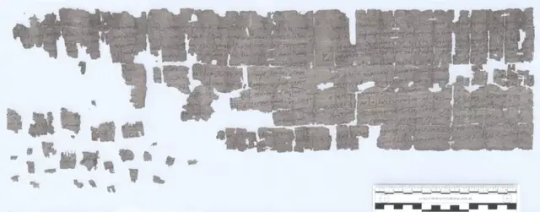
Archaeologists Find Roman Centurions' Letters in Ancient Animal Cemetery in Egypt
Discovered among the graves of hundreds of cats, dogs and monkeys, the correspondence was likely written by centurions in the first century.
An ancient pet cemetery in Egypt is becoming a gold mine for rare Roman history. Alongside its carefully constructed graves of more than 200 beloved cats, dogs and monkeys, archaeologists have now found letters handwritten 1,900 years ago by Roman centurions stationed nearby.
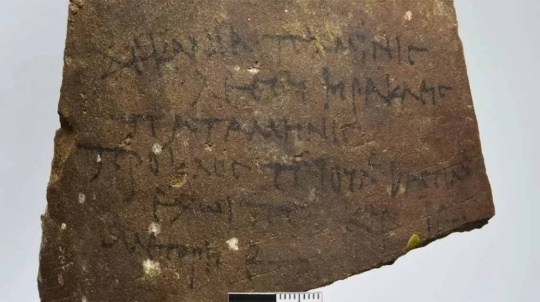
Though Rome controlled Egypt for centuries—from the year 30 to the mid-600s—few Roman sites still exist in the region, lead researcher Marta Osypińska, an archaeologist at Poland’s University of Wrocław’s Institute of Archaeology, tells Science in Poland’s Ewelina Krajczyńska. The burial ground, which dates back to the first and second centuries, is located in Berenike, a Red Sea port in southern Egypt built by Roman Emperor Tiberius.
Osypińska’s team first discovered the cemetery in 2011, and they’ve been slowly excavating it since then. Among the burials of cats, dogs and exotic monkeys, researchers have found ceramics, Roman coins and now, several letters written on papyrus by military officers who commanded units of Roman legions.
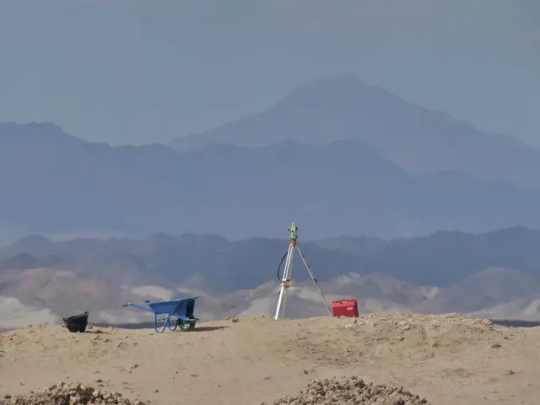
According to a statement by the University of Wrocław, these “priceless sources of knowledge about the ancient inhabitants of Berenike” are from the era of Emperor Nero, a cruel Roman ruler of the mid-first century. During his reign, Berenike was a hub of cross-continental trade, through which goods from India, Arabia and East Africa flowed, Osypińska says in the statement. The port was home to regional merchants, Roman higher-ups in charge of trading and—as historians have long suspected but never before proven—a unit of the Roman military.
The newly-found correspondence contains several names of presumed Roman centurions: Haosus, Lucinius and Petronius. In one letter, Petronius asks Lucinius, who is stationed in Berenike, about the prices of some exclusive goods, Osypińska tells Science in Poland. Petronius writes that he’s sending money via “dromedarius,” a unit of Roman soldiers traveling on camels, and tells Lucinius to provide the soldiers with veal and tentpoles.
Researchers believe ancient Romans likely kept the papyri in a nearby office which was later destroyed, accidentally distributing its contents over the pet cemetery, as McClatchy’s Aspen Pflughoeft writes. Excavators found the papyrus in rolled fragments, which they showed to Rodney Asta, an expert of ancient inscriptions, who pieced together a page approximately one and a half feet long and a foot wide, Osypińska tells Science in Poland. Among the animal graves, researchers have found countless ostracons—pieces of pottery etched with writing—but the papyri are the first paper texts to be found on-site.
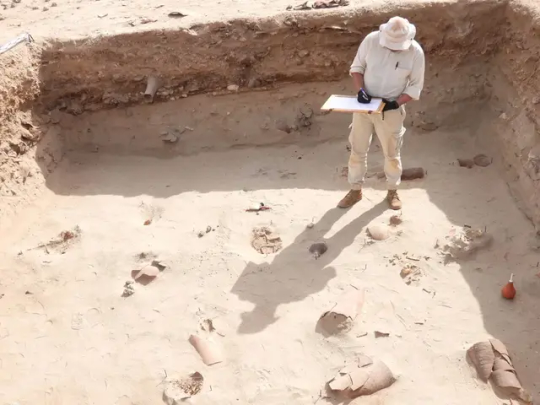


The letters are the latest evidence of advanced Roman trade to be found in the cemetery, per the statement: The skeletons of several buried monkeys, recently identified as macaques native to India, show that Romans imported non-utilitarian animals across oceans. These primates, along with long-haired cats and miniature dogs, were “elite pets,” and many were buried with toys, ceramics or other animal companions.
As Osypińska notes in the statement, it may seem difficult to reconcile the image of commanders of an ancient foreign legion with such animals, which were “treated as family members.”
“However, our findings unequivocally show that the military elite surrounded themselves with elite pets and led an exclusive lifestyle,” she adds.
By Sonja Anderson.

#Archaeologists Find Roman Centurions' Letters in Ancient Animal Cemetery in Egypt#Berenike#ancient pet cemetery in Egypt#Roman Emperor Tiberius#ancient artifacts#archeology#archeolgst#history#history news#ancient history#ancient culture#ancient civilizations#roman history#roman empire
74 notes
·
View notes
Text
updated! ID by @swosheep

ID 1: all images are screenshots of an Instagram post by letstalkpalestine. The first is a title slide and reads "lets talk: Why does israel colonize Palestine? Explaining Zionism and Settler Colonialism".

ID 2: the second image reads: "What is misleadingly termed by israel and its Western allies the "israeli-Palestinian conflict" is a single, long-running process of the Zionist colonization of Palestine. This understanding is not new, and was in fact first understood by early Zionist leaders themselves, but has only recently been accepted by Western historians. To understand why the Gaza Genocide and everything else is happening, we need to understand Zionism and why experts consider it a form of settler colonialism."
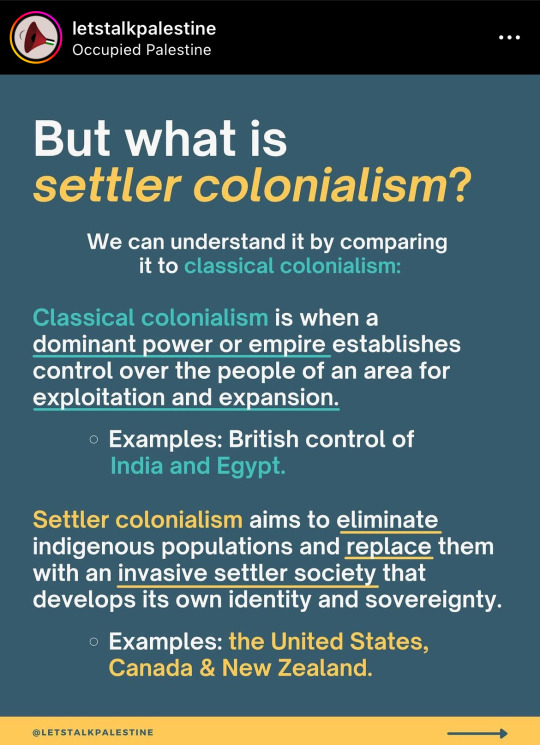
ID 3: the third image is titled: "But what is settler colonialism?" The body text reads: "We can understand it by comparing it to classical colonialism: Classical colonialism is when a dominant power or empire establishes control over the people of an area for exploitation and expansion. Examples: British control of India and Egypt. Settler colonialism aims to eliminate indigenous populations and replace them with an invasive settler society that develops its own identity and sovereignty. Examples: the United States, Canada & New Zealand."

ID 4: the fourth image is titled: "Settler colonialism is different from classical colonialism in 3 main ways:". There is a table comparing the ways. One column of the table is titled: "Settler colonialism" and the 3 points are: "1. Only temporarily & initially relies on the empire for support. 2. Motivated by desire to take over land. 3. Treats new land as a permanent national homeland for settlers." The second column of the table is titled: "Classical colonialism" and the 3 points are: "1. Always dependent on mother empire. 2. Motivated by exploiting natural resources. 3. Uses new land and its resources to serve the empire."
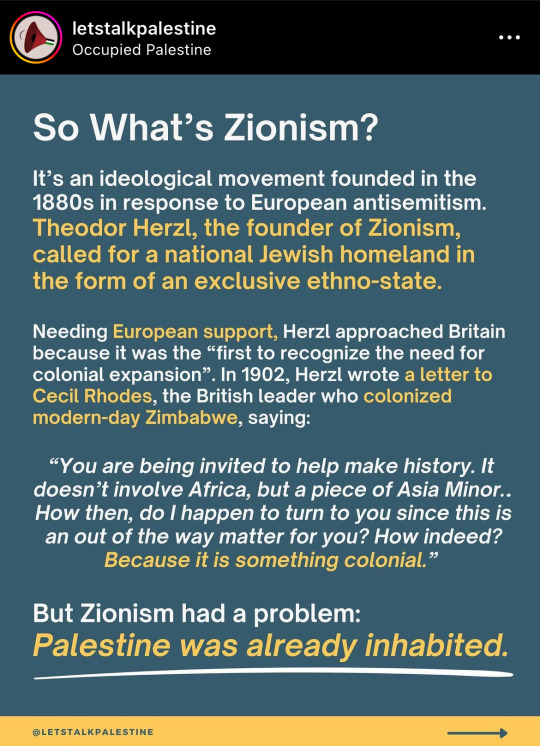
ID 5: the fifth image is titled: "So What's Zionism?". The body text reads: "It's an ideological movement founded in the 1880s in response to European antisemitism. Theodor Herzl, the founder of Zionism, called for a national Jewish homeland in the form of an exclusive ethno-state. Needing European support, Herzl approached Britain because it was the "first to recognize the need for colonial expansion". In 1902, Herzl wrote a letter to Cecil Rhodes, the British leader who colonized modern-day Zimbabwe, saying: 'You are being invited to help make history. It doesn't involve Africa, but a piece of Asia Minor.. How then, do I happen to turn to you since this is an out of the way matter for you? How indeed? Because it is something colonial.' But Zionism had a problem: Palestine was already inhabited."

ID 6: The sixth image is titled: "Zionism & Palestinians". The body text reads: "To establish a Jewish state (israel) in Palestine, Jewish people had to constitute the majority of the population. [quote] 'Only a state with at least 80% Jews is a viable and stable state.' [unquote] -[a quote from] Ben-Gurion, Israel's first Prime Minister. But Palestinians were the majority at the time. For Zionism to succeed, non-Jewish people had to be removed from Palestine and, in turn, Jewish settlers had to take their place. [quote] 'We must expel the Arabs and take their place' [unquote] -[a quote from] Ben-Gurion, Israel's first Prime Minister. This was implemented, and in 1947-1949, Zionist militias conducted a mass campaign of ethnic cleansing against Palestinians - the Nakba. 80% of Palestinians in the heartland were expelled to create Israel's Jewish majority."
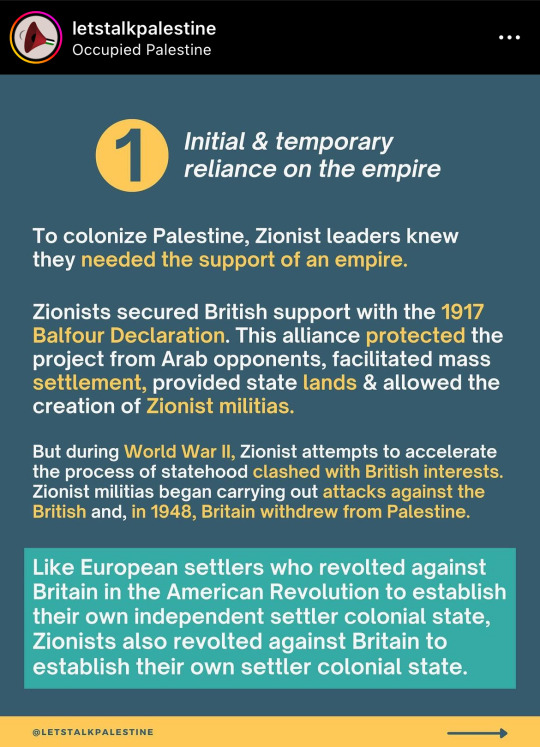
ID 7: The seventh image is titled: "1. Initial & temporary reliance on the empire". The body text reads: "To colonize Palestine, Zionist leaders knew they needed the support of an empire. Zionists secured British support with the 1917 Balfour Declaration. This alliance protected the project from Arab opponents, facilitated mass settlement, provided state lands & allowed the creation of Zionist militias. But during World War II, Zionist attempts to accelerate the process of statehood clashed with British interests. Zionist militias began carrying out attacks against the British and, in 1948, Britain withdrew from Palestine. Like European settlers who revolted against Britain in the American Revolution to establish their own independent settler colonial state, Zionists also revolted against Britain to establish their own settler colonial state."

ID 8: The eighth image is titled: "2. Desire to take over land & eliminate the native population". The body text reads: "The Zionist movement aims for as much Palestinian land as possible with as few Palestinians as possible. Zionism inherently opposes Palestinian freedom, because its vision of 'Jewish self-determination' needs the exclusion of non-Jewish people. Since nobody would willingly accept exclusion from their own land, Zionism needs the violent persecution and elimination of the existing population in order to fully succeed. [quote] 'If I wish to substitute a new building for an old one, I must demolish before I construct.' [unquote] - [a quote from] Theodor Herzl, founder of Zionism".

ID 9: The ninth image is titled: "3. Permanent homeland". The body text reads: "Zionism's goal wasn't to establish a temporary base for an empire but a permanent homeland for a new settler population. To create a new society in a populated country, Zionists claimed Palestine by moral & divine right, an example of the 'Logic of Elimination'. A pillar of settler colonialism, the 'Logic of Elimination' is when settlers develop moral justifications to eliminate the native population. Zionist talking points like - 'Palestine doesn't exist'; - 'israel made the desert bloom'; - 'israel is technologically advanced'; are used to justify the elimination of Palestinians. Such points were used in other cases of settler colonialism like South Africa, with the 'Empty Land' myth arguing that Black people arrived in South Africa at the same time as white settlers."

ID 10: The tenth image is titled: "Zionism Today". The body text reads: "A Jewish state was created, but the Zionist project isn't fully realized - Palestinians remain & resist, asserting a threatening national identity. In response, israel has doubled down on its attempts to eliminate the Palestinian people while colonizing more land. Home demolitions, ethnic cleansing, segregated settlements, erasing culture, and apartheid are methods of the Logic of Elimination rooted in Zionism as a settler colonial movement. 'But Zionism is just Jewish self-determination.' All settler colonial movements aim to advance the settlers' 'self-determination' by eliminating the natives. It's never justified. Palestinians are resisting the most aggressive ongoing settler colonial project in the world. Freedom, justice & equality are impossible without dismantling Zionism, a form of: Settler Colonialism."
#reaux speaks#zionism#free palestine#free gaza#gaza#genocide#palestine#settler colonialism#great britain#history#ethnostate#ethnic cleansing#anti zionism#resources#instagram
193 notes
·
View notes
Text
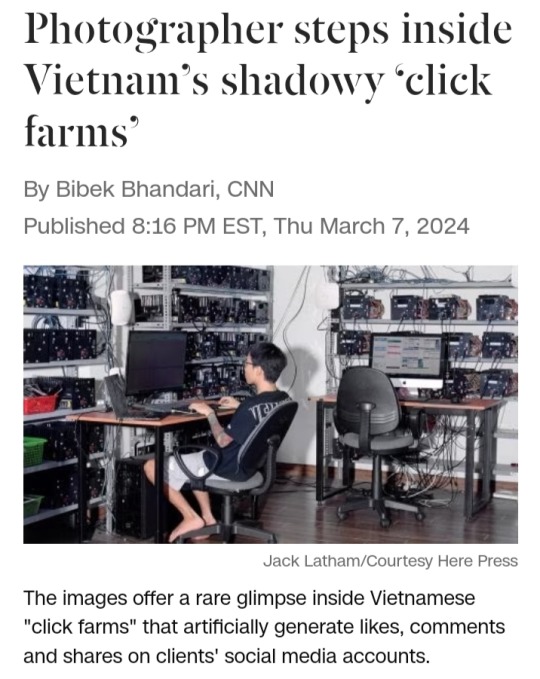
(CNN) — Jack Latham was on a mission to photograph farms in Vietnam — not the country’s sprawling plantations or rice terraces but its “click farms.”
Last year, the British photographer spent a month in the capital Hanoi documenting some of the shadowy enterprises that help clients artificially boost online traffic and social media engagement in the hope of manipulating algorithms and user perceptions.
The resulting images, which feature in his new book “Beggar’s Honey,” provide rare insight into the workshops that hire low-paid workers to cultivate likes, comments and shares for businesses and individuals globally.
“When most people are on social media, they want nothing but attention — they’re begging for it,” Latham said in a phone interview, explaining his book’s title.
“With social media, our attention is a product for advertisers and marketers.”

In the 2000s, the growing popularity of social media sites — including Facebook and Twitter, now called X — created a new market for well-curated digital profiles, with companies and brands vying to maximize visibility and influence.
Though it is unclear when click farms began proliferating, tech experts warned about “virtual gang masters” operating them from low-income countries as early as 2007.
In the following decades, click farms exploded in number — particularly in Asia, where they can be found across India, Bangladesh, Indonesia, the Philippines, and beyond.
Regulations have often failed to keep pace: While some countries, like China, have attempted to crack down on operations (the China Advertising Association banned the use of click farms for commercial gain in 2020), they continue to flourish around the continent, especially in places where low labor and electricity costs make it affordable to power hundreds of devices simultaneously.
‘Like Silicon Valley startups’
Latham’s project took him to five click farms in Vietnam.
(The click farmers he hoped to photograph in Hong Kong “got cold feet,” he said, and pandemic-related travel restrictions dashed his plans to document the practice in mainland China).
On the outskirts of Hanoi, Latham visited workshops operating from residential properties and hotels.
Some had a traditional setup with hundreds of manually operated phones, while others used a newer, compact method called “box farming” — a phrase used by the click farmers Latham visited — where several phones, without screens and batteries, are wired together and linked to a computer interface.

Latham said one of the click farms he visited was a family-run business, though the others appeared more like a tech companies.
Most workers were in their 20s and 30s, he added.
“They all looked like Silicon Valley startups,” he said. “There was a tremendous amount of hardware … whole walls of phones.”
Some of Latham’s photos depict — albeit anonymously — workers tasked with harvesting clicks.
In one image, a man is seen stationed amid a sea of gadgets in what appears to be a lonely and monotonous task.
“It only takes one person to control large amounts of phones,” Latham said. “One person can very quickly (do the work of) 10,000. It’s both solitary and crowded.”
At the farms Lathan visited, individuals were usually in charge of a particular social media platforms.
For instance, one “farmer” would be responsible for mass posting and commenting on Facebook accounts, or setting up YouTube platforms where they post and watch videos on loop.
The photographer added that TikTok is now the most popular platform at the click farms he visited.

The click farmers Latham spoke to mostly advertised their services online for less than one cent per click, view or interaction.
And despite the fraudulent nature of their tasks, they seemed to treat it like just another job, the photographer said.
‘There was an understanding they were just providing a service,” he added. “There wasn’t a shadiness. What they’re offering is shortcuts.”
Deceptive perception
Across its 134 pages, “Beggar’s Honey” includes a collection of abstract photographs — some seductive, others contemplative — depicting videos that appeared on Latham’s TikTok feed.
He included them in the book to represent the kind of content he saw being boosted by click farms.
But many of his photos focus on the hardware used to manipulate social media —webs of wires, phones and computers.
“A lot of my work is about conspiracies,” Latham said. ” Trying to ‘document the machines used to spread disinformation’ is the tagline of the project. The bigger picture is often the thing we don’t see.”
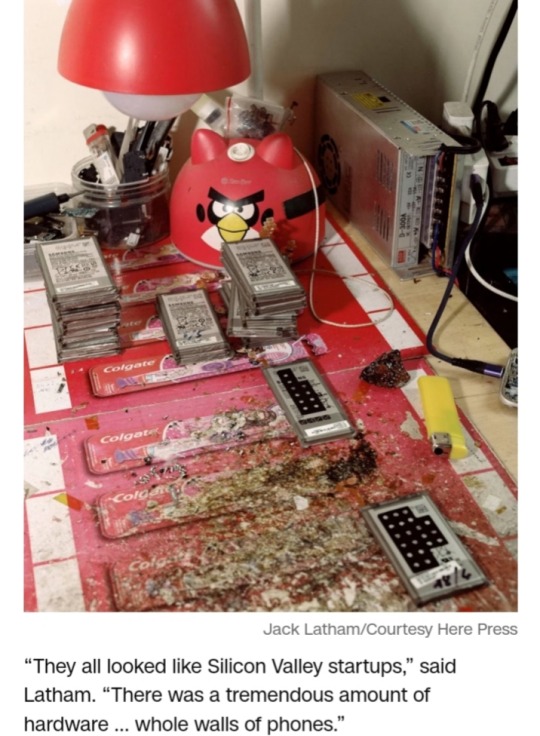
Click farms around the world are also used to amplify political messages and spread disinformation during elections.
In 2016, Cambodia’s then-prime minister Hun Sen was accused of buying Facebook friends and likes, which according to the BBC he denied, while shadowy operations in North Macedonia were found to have spread pro-Donald Trump posts and articles during that year’s US presidential election.
While researching, Latham said he found that algorithms — a topic of his previous book, “Latent Bloom” — often recommended videos that he said got increasingly “extreme” with each click.
“If you only digest a diet of that, it’s a matter of time you become diabetically conspiratorial,” he said.
“The spreading of disinformation is the worst thing. It happens in your pocket, not newspapers, and it’s terrifying that it’s tailored to your kind of neurosis.”
Hoping to raise awareness of the phenomenon and its dangers, Latham is planning to exhibit his own home version of a click farm — a small box with several phones attached to a computer interface — at the 2024 Images Vevey Festival in Switzerland.
He bought the gadget in Vietnam for the equivalent of about $1,000 and has occasionally experimented with it on his social media accounts.
On Instagram, Latham’s photos usually attract anywhere from a few dozen to couple hundred likes.
But when he deployed his personal click farm to announce his latest book, the post generated more than 6,600 likes.
The photographer wants people to realize that there’s more to what they see on social media — and that metrics aren’t a measurement of authenticity.
“When people are better equipped with knowledge of how things work, they can make more informed decisions,” he said.

“Beggar’s Honey,” co-published by Here Press and Images Vevey, is available now.
#Jack Latham#click farms#box farms#Hanoi#Vietnam#Beggar’s Honey#box farming#social media#algorithms#user perception#trolls#PR#marketing#advertising#likes#comments#shares#digital profiles#virtual gang masters#bots#spam#China Advertising Association#click farmers#mass post#disinformation#misinformation#fake news#metrics
13 notes
·
View notes
Text

World War Two: When 600 US planes crashed in Himalayas
2 days ago
View of a US Army Air Transport Command cargo plane as it flies over the snow-capped, towering mountains of the Himalayas, along the borders of India, China, and Burma, January 1945, February 20, 1945.Getty Images
Pilots called the flight route "The Hump" - a nod to the treacherous heights of the eastern Himalayas
A newly opened museum in India houses the remains of American planes that crashed in the Himalayas during World War Two. The BBC's Soutik Biswas recounts an audaciously risky aerial operation that took place when the global war arrived in India.
Since 2009, Indian and American teams have scoured the mountains in India's north-eastern state of Arunachal Pradesh, looking for the wreckage and remains of lost crews of hundreds of planes that crashed here over 80 years ago.
Some 600 American transport planes are estimated to have crashed in the remote region, killing at least 1,500 airmen and passengers during a remarkable and often-forgotten 42-month-long World War Two military operation in India. Among the casualties were American and Chinese pilots, radio operators and soldiers.
Has India's contribution to WW2 been ignored?
The operation sustained a vital air transport route from the Indian states of Assam and Bengal to support Chinese forces in Kunming and Chungking (now called Chongqing).
The war between Axis powers (Germany, Italy, Japan) and the Allies (France, Great Britain, the US, the Soviet Union, China) had reached the north-eastern part of British-ruled India. The air corridor became a lifeline following the Japanese advance to India's borders, which effectively closed the land route to China through northern Myanmar (then known as Burma).
The US military operation, initiated in April 1942, successfully transported 650,000 tonnes of war supplies across the route - an achievement that significantly bolstered the Allied victory.
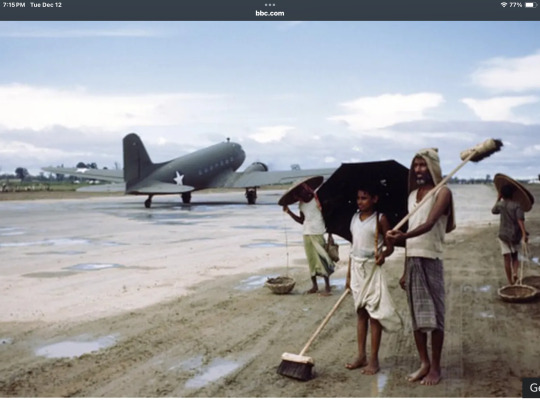
This operation sustained a vital air transport route from India to support Chinese forces in Kunming and Chunking
Pilots dubbed the perilous flight route "The Hump", a nod to the treacherous heights of the eastern Himalayas, primarily in today's Arunachal Pradesh, that they had to navigate.
Over the past 14 years Indo-American teams comprising mountaineers, students, medics, forensic archaeologists and rescue experts have ploughed through dense tropical jungles and scaled altitudes reaching 15,000ft (4,572m) in Arunachal Pradesh, bordering Myanmar and China. They have included members of the US Defense POW/MIA Accounting Agency (DPAA), the US agency that deals with soldiers missing in action.
The forgotten Indian soldiers of Dunkirk
With help from local tribespeople their month-long expeditions have reached crash sites, locating at least 20 planes and the remains of several missing-in-action airmen.
It is a challenging job - a six-day trek, preceded by a two-day road journey, led to the discovery of a single crash site. One mission was stranded in the mountains for three weeks after it was hit by a freak snowstorm.
"From flat alluvial plains to the mountains, it's a challenging terrain. Weather can be an issue and we have usually only the late fall and early winter to work in," says William Belcher, a forensic anthropologist involved in the expeditions.
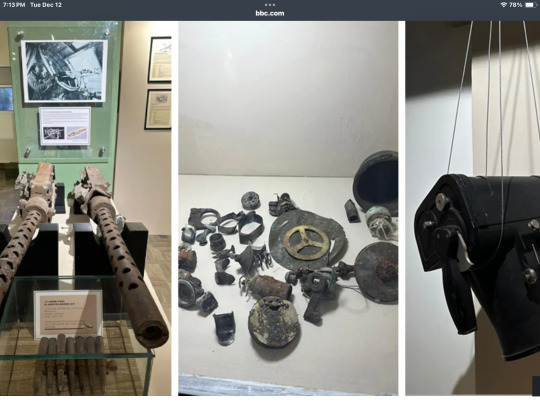
A machine gun, pieces of debris, a camera: some of the recovered artefacts at the newly opened museum
Discoveries abound: oxygen tanks, machine guns, fuselage sections. Skulls, bones, shoes and watches have been found in the debris and DNA samples taken to identify the dead. A missing airman's initialled bracelet, a poignant relic, exchanged hands from a villager who recovered it in the wreckage. Some crash sites have been scavenged by local villagers over the years and the aluminium remains sold as scrap.
These and other artefacts and narratives related to these doomed planes now have a home in the newly opened The Hump Museum in Pasighat, a scenic town in Arunachal Pradesh nestled in the foothills of the Himalayas.
US Ambassador to India, Eric Garcetti, inaugurated the collection on 29 November, saying, "This is not just a gift to Arunachal Pradesh or the impacted families, but a gift to India and the world." Oken Tayeng, director of the museum, added: "This is also a recognition of all locals of Arunachal Pradesh who were and are still an integral part of this mission of respecting the memory of others".
The museum starkly highlights the dangers of flying this route. In his vivid memoirs of the operation, Maj Gen William H Tunner, a US Air Force pilot, remembers navigating his C-46 cargo plane over villages on steep slopes, broad valleys, deep gorges, narrow streams and dark brown rivers.

Wreckage of many planes has been found in the mountains in recent years
The flights, often navigated by young and freshly trained pilots, were turbulent. The weather on The Hump, according to Tunner, changed "from minute to minute, from mile to mile": one end was set in the low, steamy jungles of India; the other in the mile-high plateau of western China.
Heavily loaded transport planes, caught in a downdraft, might quickly descend 5,000ft, then swiftly rise at a similar speed. Tunner writes about a plane flipping onto its back after encountering a downdraft at 25,000ft.
Spring thunderstorms, with howling winds, sleet, and hail, posed the greatest challenge for controlling planes with rudimentary navigation tools. Theodore White, a journalist with Life magazine who flew the route five times for a story, wrote that the pilot of one plane carrying Chinese soldiers with no parachutes decided to crash-land after his plane got iced up.
The co-pilot and the radio operator managed to bail out and land on a "great tropical tree and wandered for 15 days before friendly natives found them". Local communities in remote villages often rescued and nursed wounded survivors of the crashes back to health. (It was later learnt that the plane had landed safely and no lives had been lost.)
Does Nolan's Dunkirk ignore the role of the Indian army?
Not surprisingly, the radio was filled with mayday calls. Planes were blown so far off course they crashed into mountains pilots did not even know were within 50 miles, Tunner remembered. One storm alone crashed nine planes, killing 27 crew and passengers. "In these clouds, over the entire route, turbulence would build up of a severity greater than I have seen anywhere in the world, before or since," he wrote.
Parents of missing airmen held out the hope that their children were still alive. "Where is my son? I'd love the world to know/Has his mission filled and left the earth below?/Is he up there in that fair land, drinking at the fountains, or is he still a wanderer in India's jungles and mountains?" wondered Pearl Dunaway, the mother of a missing airman, Joseph Dunaway, in a poem in 1945.

The China-bound US transport planes took off from airbases in India's Assam
The missing airmen are now the stuff of legend. "These Hump men fight the Japanese, the jungle, the mountains and the monsoons all day and all night, every day and every night the year round. The only world they know is planes. They never stop hearing them, flying them, patching them, cursing them. Yet they never get tired of watching the planes go out to China," recounted White.
The operation was indeed a daredevil feat of aerial logistics following the global war that reached India's doorstep. "The hills and people of Arunachal Pradesh were drawn into the drama, heroism and tragedies of the World War Two by the Hump operation," says Mr Tayeng. It's a story few know.
12 notes
·
View notes
Text
''Humanities are unnecesary and a burden in modern society!'' is a statement that will never be valid, at least not as long as we get takes as moronic as this one.

Losing my mind at this guy. Literally a google search away. They do not even try to hide it. And most people who see this, according to the numbers in the tweet, do agree!
But it gets worse.
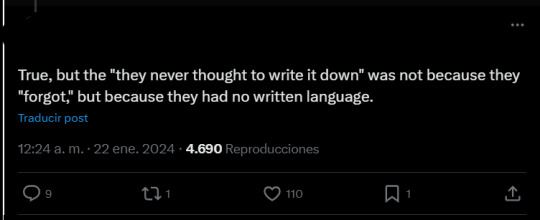
Those dumb guys in the primitive americas did not know how to write. Wait, what? What's this?
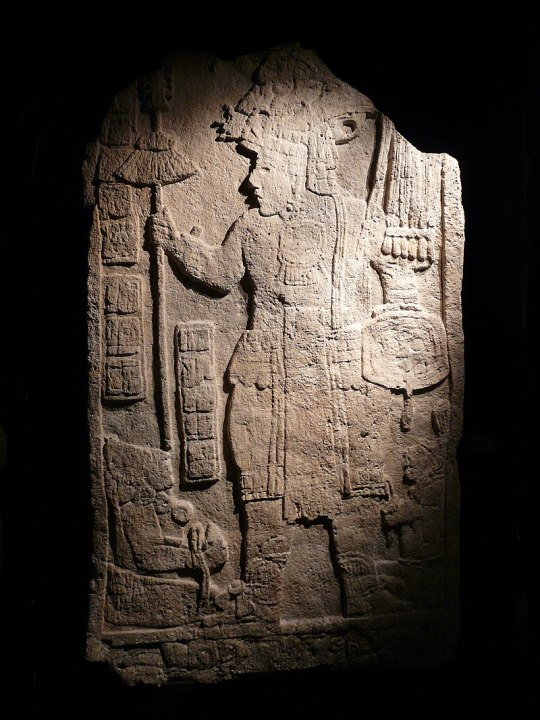
Wait, what? A mayan king commemorating an HISTORICAL battle by using WRITTEN GLYPHS? B-but they have no sense of time or writting! That must be a fluke!
Mmmh? But...?
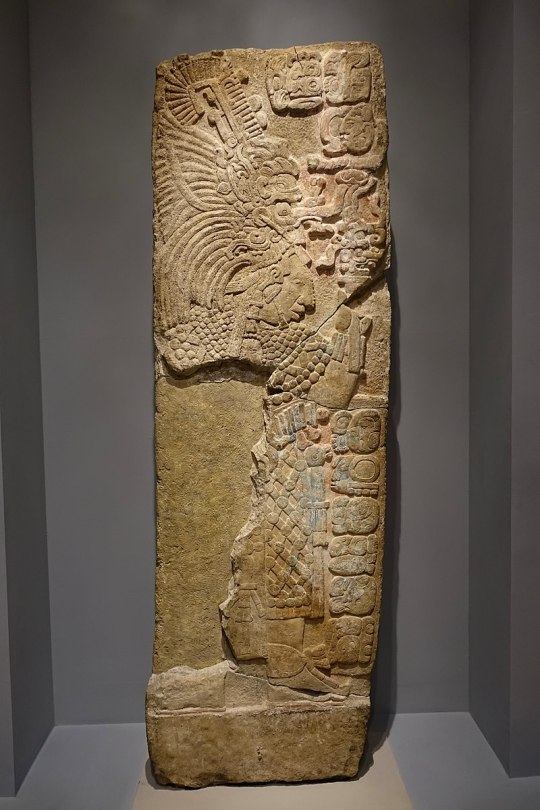
A stel portraying a maya queen, with again written symbols mentioning her directly?
''No, those don't count, they're just dumb short phrases, they are surely uncapable of writting down coherent tex-''

Wow, the Dresden Codex, dated from 11th century (mayans were not even at their peak here) writting down their religion, customs, different gods and even complex astronomical movements all-in-one!
Those stone age troglodytes were surely lucky to be able to keep time counts in the thousands of years!

Okay, you're right. Mentioning mayans is cheating because they do not use enough ''actual words'' only drawn ones!

Forget the fact they had a whole ass syllabic system, that experts have been deciphering for decades.
By this rule of thumb, the japanese are all illiterate because they do not actually use words, but abstractions in the form of syllabes. Maya greatest mistake was to do their particles too artistically or something.
The previous tweet implied there was going to be a threat debunking whatever rambling that person was on about, but it stopped there. So... okay.
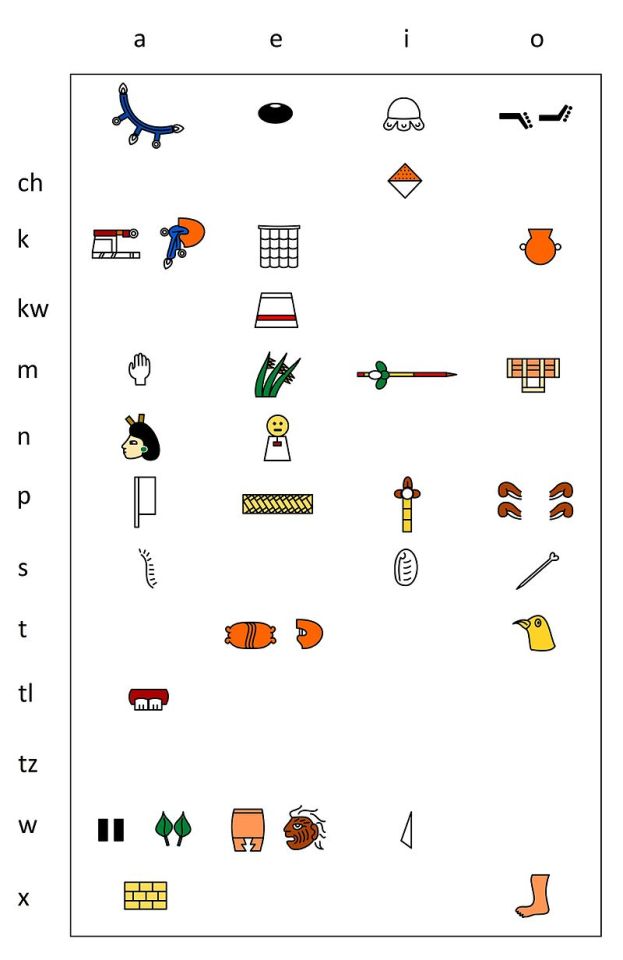
Regarding the aztecs, that would actually be somewhat accurate. They relied mostly on ideographic writting, but they also combined syllabes. They were still developing their language independently of the mayans. The process was interrupted by the arrival of the spanish crown.
However the writting of the aztecs is stupid and primitive because it doesnt resemble my latin alphabet enough AAAAGH! With such underdeveloped writting they wouldn't be able to write texts, let alone make librar-

Someone else answered, and it's literally the first google result right now, putting this curious image.
I wonder what it's trying to convey.

Solved. It's not a library because... well it's not! It's made of stone and has stupid scribblings stored. It's a nu-library!
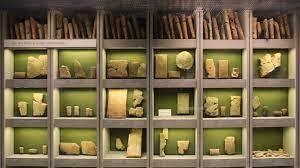
How are we going to tell Asurbanipal his assyrian library does not count because it's just not a library, because we need to dunk on the americas?

Forget the books. The real reason they're regressive is because they had no wheel.

They obviously relegated the wheel to toys, because after inventing, polishing it, even using it metaphorically in their intrincate calendars, they decided they didn't know how to use it beyond children toys. It was, again, a skill issue.
Regarding armor and weapons, did you know spanish conquistadores discarded their plate mails and used cotton armor from the natives, far better resistant to rust, and able to disperse slashing and piercing damage with comparable success? Far more comfortable, mobile, and less prone to well, cooking you alive.
How come, also, that Mayas and Aztecs knew each other? They lived in different zones of Mexico with frontiers separated by kilometers? Their trading routes (shared) must have been a stroke of dumb luck.

Apparently if you don't cross the whole ass Pacific/Atlantic Ocean, it does not count. By the way, did anyone in China, India, Africa, Europe or even Australia know about the Native Americans?
Conclussion: If you exclude Mayans, Aztecs, a myriad of other cultures in the Americas, their issolation to the rest of the continents, their set of beliefs, languages, structures, trade routes, traditions, libraries and use of the wheel among some other ''tiny'' advancements... well, you're right. They end being quite primitive.
I guess that's their fault. Maybe they should have conquered us first or some crap.
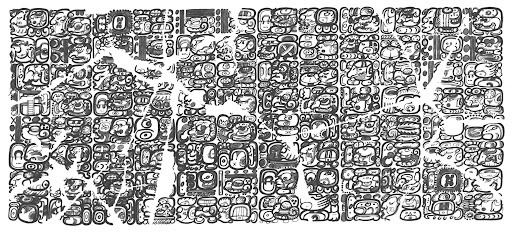
Those morons and their obscure scribblings.
PD: I excluded this person name in purpose. Do not send harassment to them. This generalized ignorance of America cultures does not radiate from a single person, instead is a shared set of common beliefs. We must combat the biased takes in constructive ways.
#language#culture#rant#anthropology#history#linguistics#maya#mesoamerica#glyph#dudebro#aztec#aztec culture#codex
11 notes
·
View notes
Text
Captain Hook's crew
Throughout the movies (and some of the book) we learn about the different members of Hook's crew and even reveal some of their names. Each seem to have a LITTLE bit of a backstory? (somewhat)
I'm fairly sure Hook has had many more crew members before, to run a ship isn't a small deal, he needs plenty of men to run it and you DO see more crew members in the films though these names belong to the pirates that make regular appearances.

These reoccurring pirates are Smee, Mullins, Wibbles, Turk, Black Murphy, Bill Jukes, Starkey, Cecco, Skylights, Noodler, Sharky and Bones.
Smee: Self explanatory, we all know who Smee is! Though it would be incorrect to properly assume that Smee is his first mate, technically, in the books, Smee is Hook's boatswain, aka, the man in charge of the sails and is an expert on the subject (wind, furling, etc) Though we also see Smee's other talents too, in various aspects he's shown to be cooking a lot (despite the fact the ship is mentioned to already have a cook) although its proven in the series that his cooking skills are to be desired. Smee is also a little bit of a medic and of course, a caretaker, mostly to Hook.


Mullins: Not much known about him, although, in book, he gets stabbed and killed by one of the lost boys. In the second movie, he's the first to fall in the water to try and grab the diamond.


Wibbles: He doesn't appear in the book at all, but he's usually seen either with a dagger or a gun or both together. He seems to be adept in dual combat and in the first movie, he is the one to say that 'we should be in the business of plunderin' ships' when the crew are growing bored of chasing peter.


Turk: In Epic Mickey his 'real' name is apparently revealed to be Damian Salt. He also doesn't appear in the books, in the films, its implied that he is either from Arabia or India and its backed up by the fact he's one of the only pirates we see wielding a scimitar.

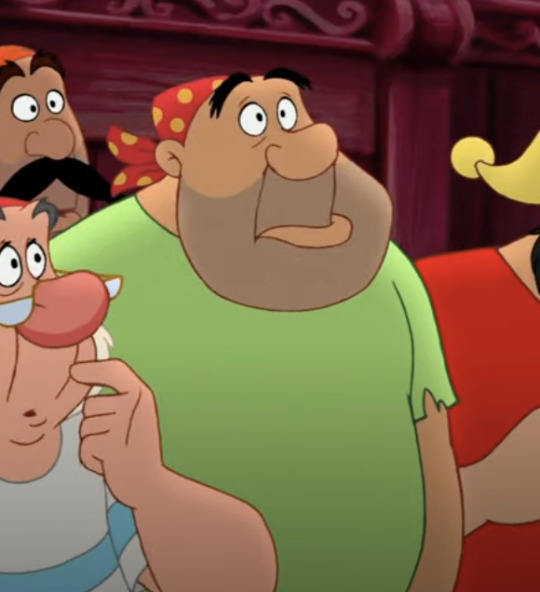
Black Murphy: Seen in the first movie, he often is seen with a dagger and talently at using one too, able to shoot it from his mouth to hit a target.
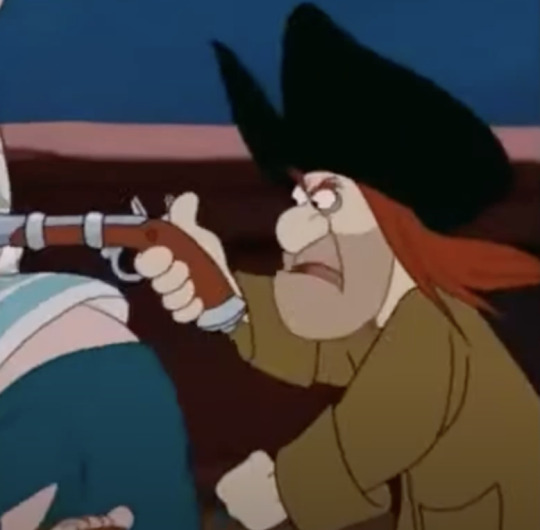

Bill Jukes: Perhaps the one we see the most with a gun in hand, or even a blunderbust, he seems to favour the bullet rather than the blade, though we do see him with one. In the cut song 'I'll give you one guess' its revealed that Jukes joined the crew when he was just a kid, when he was a boy and Hook taught him the life of being a sailor and a pirate, therefore, we can say that there are others in the crew that have been taken on from a young age.


Starkey: In the book its said that Starkey was Hook's butler and also a gentleman, as well as a first mate. For continuation reasons, I dumped the idea of him being gentlemanly and a butler. Starkey is still, however, the first mate, being the one that always is seen steering the ship in Hook's absence from the wheel. By no means is he smart, but he is strong and knows his way around a ship, which deemed him well as first mate. He also always seems to have a dagger in his mouth.



Cecco: Not named in the films, but appears in the book as an Italian man in the crew, its said that he cut his name into the back of the govenor at a prison before being taken in by Hook. He's killed by pan in the book. The first image is from the 1904 version, from this, I've picked out pirates who he COULD be in the disney version.

Skylights: Also not offically appearing in the films, he appears in the book, being the one that Hook kills for bumping into him by accident. We can only deduce that Skylights is always the pirate in any of the movies that Hook himself kills, so in the Disney version, Skylights is the man singing, which Hook cuts short with a bullet.

Noodler: Not really appearing in the films, but in the book, Noodler is said to be a pirate with his hands on backwards. Although he never makes an appearance in the Disney animated version, he does in the 2003 live action.
Sharky and Bones: These two only appear in Jake and the Neverland Pirates, although you can possible link them to one of the other members of Hook's crew in the movies. In the Neverland Pirates series, they seemed to a couple of musicians, always singing and playing instruments for Hook.


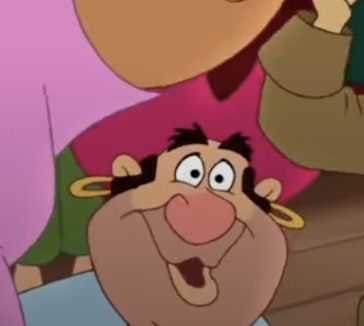

So there you have it! uwu thats the best rundown of the crew I can give!
5 notes
·
View notes